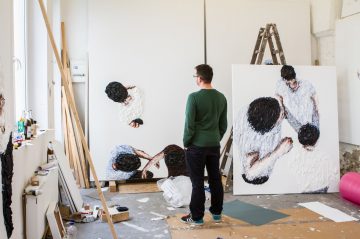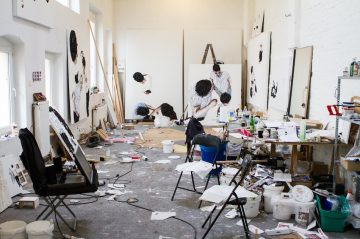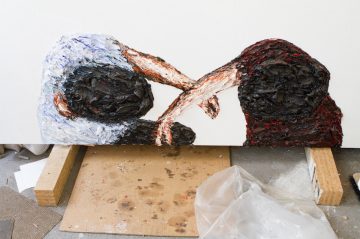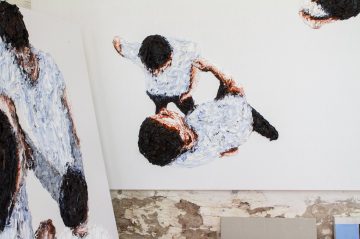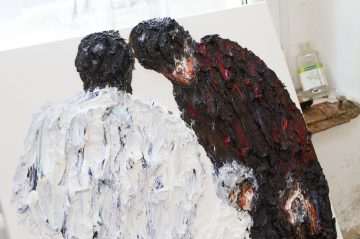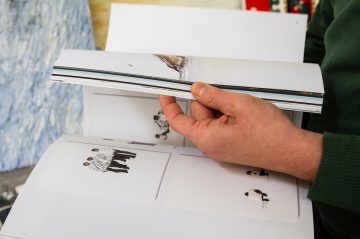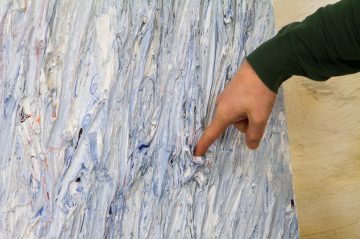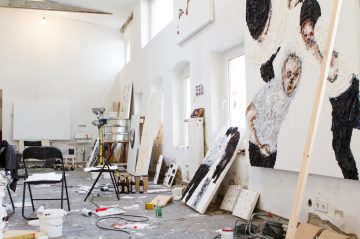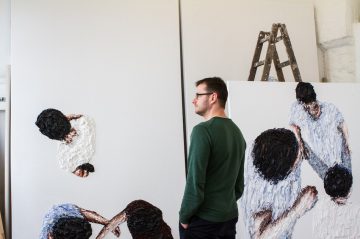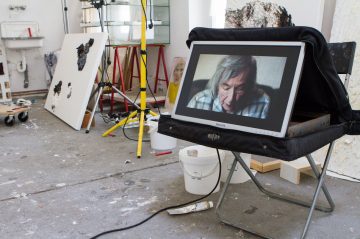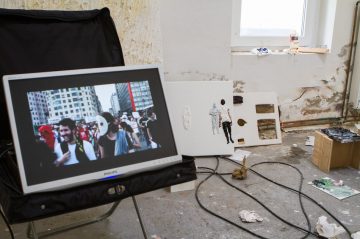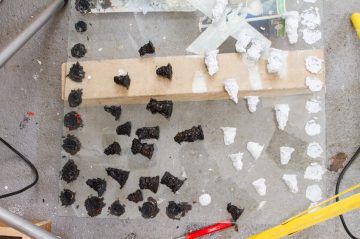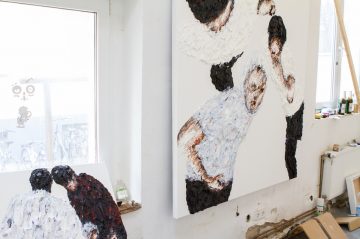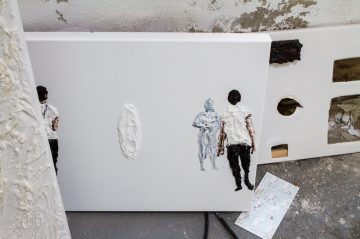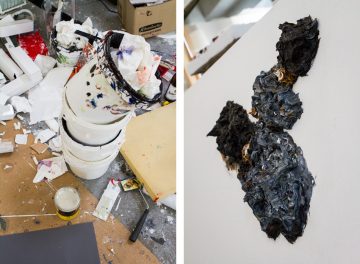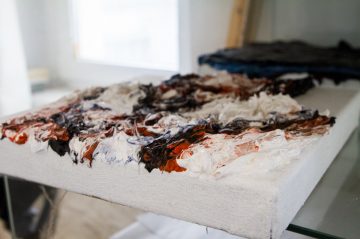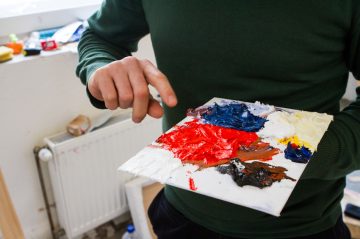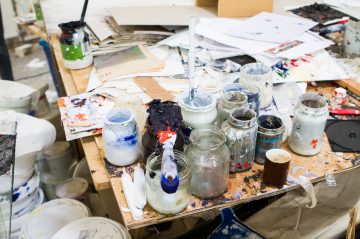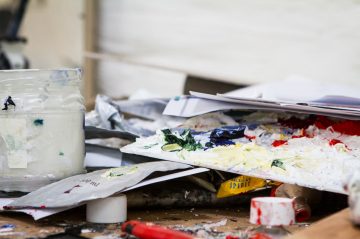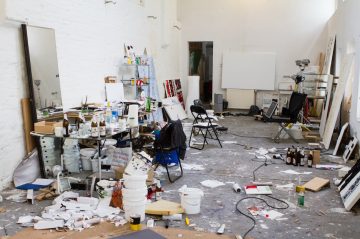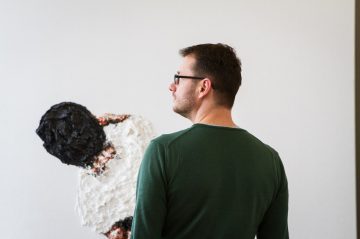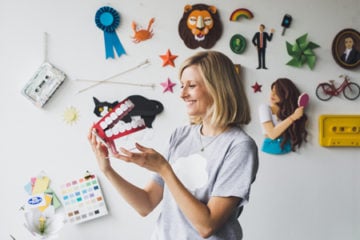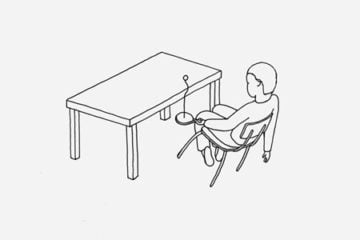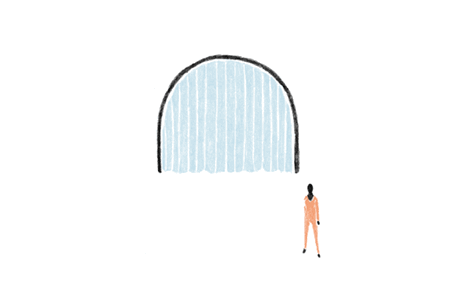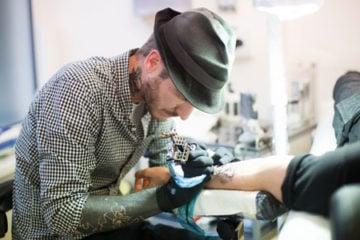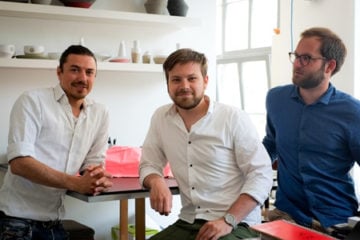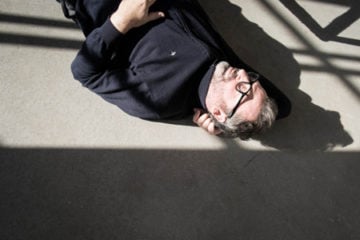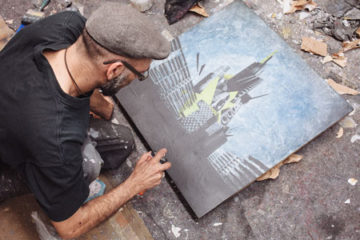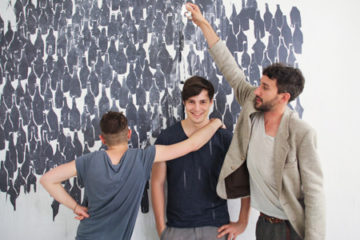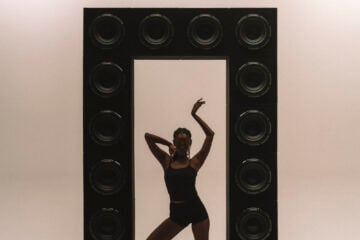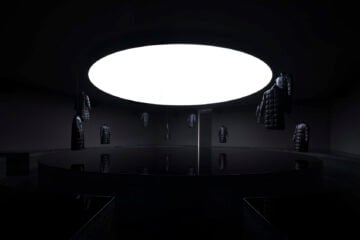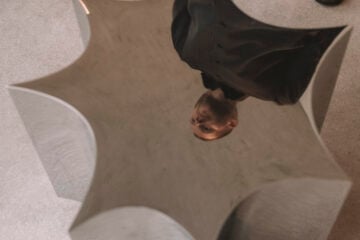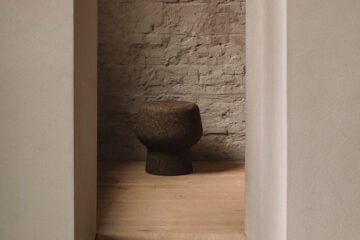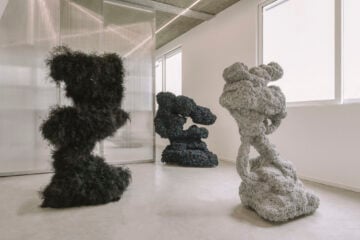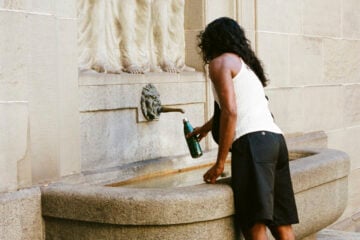Clemens Krauss
- Words
- Esther Jablotschkin
We meet Clemens Krauss in his light-filled studio in Berlin Pankow. It not only houses many of his large-scale paintings and video works, the space is covered with countless of empty paint tubes, which immediately gives insight into his artistic practice.
+ Read MoreClemens Krauss is particularly interested in the human body, as metaphor or performative embodiment of social, political and cultural processes. But even his own biography, all the traveling and different influences, are important points of reference in his works. ‘In order to better understand the social and cultural reality, the own biography is often the only available source.’
As in any other medium, painting is his possibility to act, which in his case also includes the physical presence of the color itself. The enormous amount of pastel colored oil paint (drying can take up to 6 months), is becoming an object itself and makes the painted subjects appear almost three-dimensional.
The figures are set apart before a white background or directly painted on the gallery wall, always from extreme perspectives. Thus the composition appears as dynamic fragment of a moment, deprived of all temporal and spatial reference and yet symbolically charged.
At first glance, it seems as if Krauss’ intention is to create a neutral place for imagination. In fact the performative bodies become a projection screen for current social codes or gestures that have been burned in our collective memory and identity by the media.
Thereby he is not primarily concerned to apply direct criticism, but to subtly invite for a little bit of self-reflection on our own performance within the common social environment.
Source of inspiration for his paintings is the newspaper, television or simply everyday life.
Born in Graz in 1981, Clemens Krauss is a doctor of medicine and studied Fine Arts in Berlin and London.
Among others, his most impressive work includes a silicone cast of his entire nude body from 2004/2009. Since 2006 Krauss has also cut bodies from his canvasses and installed them on glass shelves like objects.
Text and Images by Sylvie Weber
